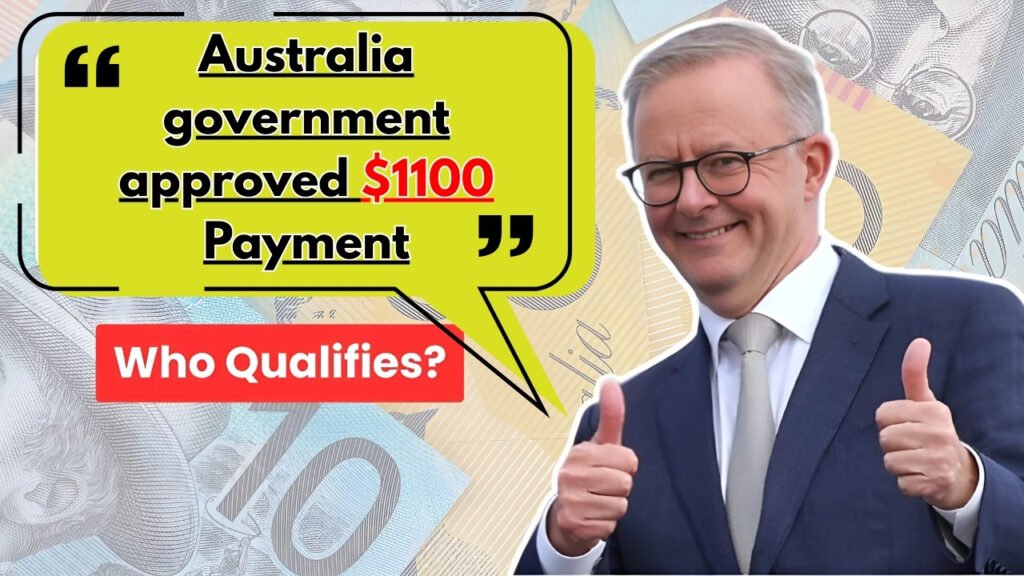$1100 Payment : Recent social media posts claiming the Australian government approved $1,100 payments for certain households require careful verification against actual announced programs. While various federal and state assistance measures exist for Australian households facing cost-of-living pressures, no universal $1,100 payment has been recently announced through official government channels for widespread distribution in 2025.
The Australian government provides multiple support payments through different programs, but these vary significantly in amounts and eligibility criteria. Current assistance includes energy bill relief, rent assistance, and targeted support for families and pensioners. These programs operate through established systems like Centrelink rather than as standalone one-off payments. Understanding which programs actually exist helps households identify legitimate support versus misinformation.
State governments across Australia have introduced their own cost-of-living relief measures, which may contribute to confusion about payment amounts and eligibility. Queensland, Victoria, and New South Wales have each implemented different rebate schemes for electricity bills, registration costs, and other household expenses, though none currently match the specific $1,100 figure being circulated.
Energy Bill Relief and Utility Assistance
The federal government’s energy bill relief program provides assistance to eligible households through automatic credits applied to electricity bills. This support reaches households through energy retailers rather than direct payments, with amounts varying by state and household composition. Pensioners, Commonwealth Seniors Health Card holders, and Family Tax Benefit recipients typically qualify for these rebates.

Most eligible households receive between $300 and $500 annually in energy relief, applied quarterly to electricity accounts. Some states provide additional rebates on top of federal assistance, potentially bringing total relief closer to $1,000 for certain households. However, these credits appear on utility bills rather than as separate cash payments, distinguishing them from claims about direct $1,100 deposits.
Low-income households can access additional utility relief through state-based hardship programs and payment plans. These programs help manage accumulated utility debt and prevent disconnections, though support amounts vary based on individual circumstances and demonstrated need rather than fixed $1,100 payments.
Family Tax Benefits and Household Support
Families with dependent children receive ongoing support through Family Tax Benefit Part A and Part B, with payment rates determined by family income and children’s ages. Maximum rates for Family Tax Benefit Part A reach $6,938.65 annually per child under 13, paid fortnightly throughout the year. Part B provides up to $3,373.05 yearly for single parents and families with one primary income earner.
The government periodically announces Family Tax Benefit supplements, though these typically range from $200 to $800 per family rather than the $1,100 figure currently circulating. These supplements usually coincide with end-of-financial-year reconciliation when families have met activity test requirements and income estimates prove accurate.
Child Care Subsidy provides substantial support for working families, with some households receiving assistance exceeding $1,100 monthly depending on income levels, hours worked, and childcare usage. This ongoing subsidy applies directly to childcare fees rather than being paid as lump sums to families.
Rental Assistance and Housing Support
Commonwealth Rent Assistance helps eligible renters manage housing costs, with maximum fortnightly rates of $184.80 for singles and $174.00 per person for couples. Over a year, this assistance can exceed $4,800 for qualifying households, though payments arrive fortnightly with regular Centrelink benefits rather than as lump sums.
Some states offer additional rental relief programs or one-off grants for households experiencing severe rental stress. These programs typically require applications demonstrating financial hardship and may provide emergency assistance ranging from $500 to $2,000, though eligibility remains restricted to specific circumstances rather than broad household categories.
VA Disability Payments for 2025 year confirmed by Government – Check new payment details
$1100 Payment Verifying Legitimate Government Payments
Australians should verify all payment claims through official government websites including Services Australia, myGov, and state government portals. Legitimate government payments are announced through ministerial press releases, official websites, and mainstream media coverage, not solely through social media posts or unofficial websites.
Any genuine $1,100 payment would include clear eligibility criteria, application processes, and payment schedules published on government websites with detailed guidance for recipients.
